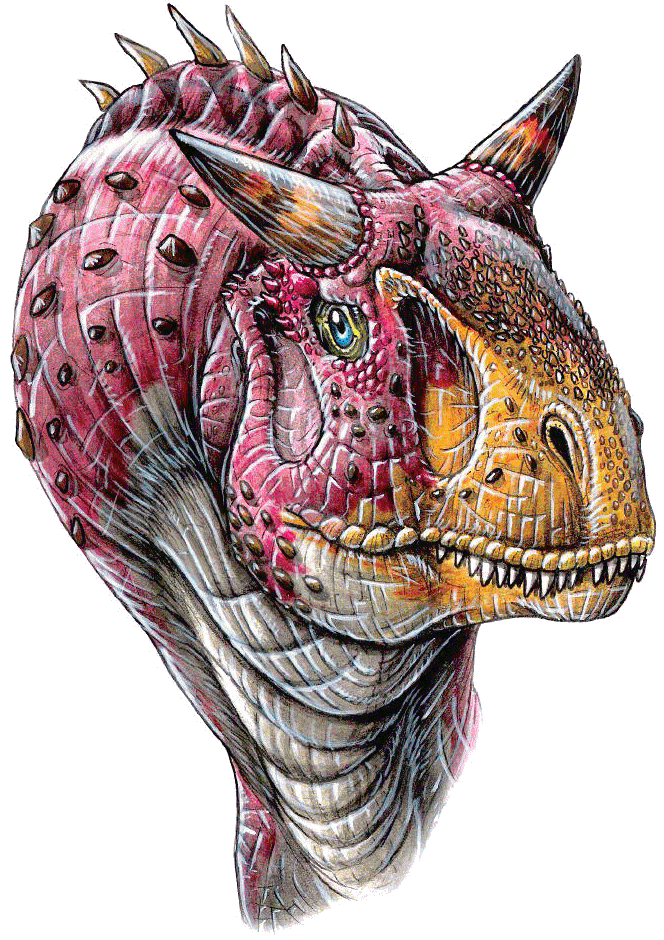|
Carnotaurus sastrei
(Bonaparte,1985) |
 |
|
Name Means: |
"Flesh-eating Bull" |
Length: |
24 Feet (7.5m) |
|
Pronounced: |
car-no-tore -us |
Weight: |
1 ton (960 kilos) |
|
When it lived: |
Middle Cretaceous - 115 MYA |
|
|
|
Where found: |
Patagonia, Argentina |
|
|
|
Carnotaurus is one of
the strangest dinosaurs to have come from South America. It was
discovered in Patagonia, the southern tip of Argentina.
The most unusual feature of this meat-eating
dinosaur was that it had two short, knobby eyebrow-horns and a small,
deep shaped skull, making it look somewhat like a bull. These
characteristics are reflected in its name. The horns were
probably used more to impress females than for fighting.
Carnotaurus was fierce looking fellow. Its eyes
faced forward, which is unusual in a dinosaur, and may indicate
binocular vision and depth perception. It could look you in the
eye, then flash a mouthful of flesh-tearing teeth, which enough to
scare the pajamas off anything.
. Although the upper part of the skull seems
powerful, the lower part appears slender and weak. The snout is
incredibly blunt and deep, giving Carnotaurus the appearance of
a dinosaur bulldog. Perhaps the strangest feature of this theropod is
its tiny, underdeveloped arms, probably the tiniest of any of the
larger meat-eaters. Its arms were so short that the hands
appeared to sprout almost directly from the elbows. The forearms were
not much longer than the fingers and they did not bend. It had
primitive four-fingered hands and one of the fingers was a
backward-facing spike. The palms faced outwards.
Carnotaurus sastrei was discovered in province of the
Chubut by doctor A'ngel Tailor, who noticed a concretion of bone
fragments. It was excavated in 1984 by José F. Bonaparte, who led a
paleontological expedition of the Argentine Museum of Natural
Sciences. it seemed that it was impossible to extract that material
because it was on a tremendously hard rock, but eventually a single
nearly complete skeleton has been described including impressions of
skin along almost the entire right side.
Carnotaurus provided the best theropod skin
impressions ever found. The skin was leather-like and lined with rows
of bumps, that become larger toward the spine. These small
cone-shaped nodules, each about two inches (5 cm) across, were
regularly spaced over its body. Bonaparte says that when dying,
this animal had been thrown on the mud, that when becoming hardened
perfectly copied the texture of the leather. Although closely
related to the feathered dinosaurs, the highly-detailed skin
impressions showed no sign of feathers. |
|
|
|
|
|
|
|
|
Edugraphics.Net | Feenixx Publishing |
|
|
|
|